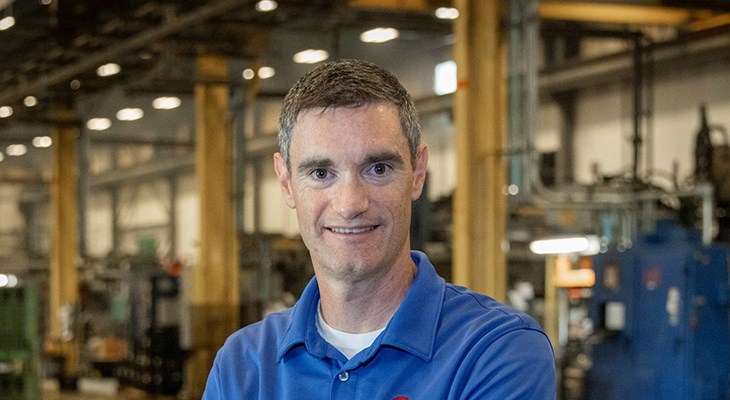General Die Casters has been in business since 1957 making high-pressure aluminum die castings of parts for everything from automobiles to chainsaws. About a year ago, CEO Brian Lennon says the company's sale process started.
"We were on a great trajectory," Lennon says.
Sales had grown through COVID, they were holding a really nice EBITDA percentage and had a backlog of sales growth for the coming years.
"We had a strong team," he said during the Cleveland Smart Business Dealmakers Conference. "Things were about as good as they could be."
Then, about a year ago, there were significant headwinds. Inflation was climbing rapidly, the labor situation became very challenging, especially in the company's labor-intensive industry. So, he says there was some question as to whether the company's situation was as good as it was going to get.
"The M&A market had been really hot up to then and everybody thought maybe the window was closing," Lennon says. "So, we thought if we were going to do it, it's a good time to explore opportunities."
After connecting with Citizens M&A Advisory, they started down the road. They got the CIM together and we're anxiously awaiting the response from the buyer market. They got two IOIs.
"At that point, not feeling very loved — our industry wasn't what people wanted, or that window was closing," he says.
However, one of the offers was intriguing. It was another, smaller die caster who Lennon says he hadn't heard of. They were backed by a private equity group that was focused totally on small and mid-sized manufacturing.
"It was very intriguing because we had looked at some acquisitions in the past and all the other die casters were small shops, or they hadn't reinvested, they didn't have the people, the aging owners who wanted to get out didn't want to stick around. So, just weren't good situations," Lennon says.
When they looked closer, they discovered the potential buyer was a rapidly growing company that had been around for about 30 years and had a high percentage of non-auto businesses, which is where Lennon says General Die Casters likes to play. He says they had a very good young team, but they were growing faster than they could handle.
"It became pretty clear that they had what we needed, which is more capacity, different non-auto customers in similar industries, and they had a lot of youth," he says. "And then we had what they needed — they needed some leadership, they need some engineering support."
Rather than selling to the company, they decided to do a sell and a buy. So, General Die Casters would end up in a merger position, backed by a private equity group, and would sell a portion of its business. Dart Casting wanted General's management team to reinvest a pretty significant portion back in, and its management team, led by Lennon, would help run the organization.
The relative value of each company, especially with General reinvesting, really factored into what percentage of the new organization that General would own.
"There was definitely a lot of negotiations back and forth, and it really came down to the multiple of EBITDA," he says. "The EBITDA is pretty straightforward. Most manufacturing businesses in our arena will go for four to six times EBITDA. And we, being a more mature, strong organization, we were obviously negotiating towards the higher side. And we felt that Dart, being not quite where we were, should have been on lower side. We met somewhere in the middle."
Knowing that bolting the two companies together would instantly increase the combined companies' potential EBITDA multiple on the market made the negotiations easier. The two companies settled for a number that they knew would work for the new organization.
Lennon says from his side, the diligence was a little tricky.
"We pushed pretty hard to get in there to get as much information as we could," he says. "The buyer obviously took the stance of, We're buying you, you're not buying us. But I'm like, Well, I'm reinvesting a significant portion of our money back in. So, there was a lot of give and take, a lot of pushing and pulling. At the end of the day, I can't say that I got all the diligence that I would have liked in the situation. But we had a couple on site visits and just (my) 30 years in the business allowed me to assess what I needed to assess, at least on the potential of their particular operation."
Before the deal closed, they were doing potential integration meetings, something he says could have tipped the scales in either direction and it could have ended up being a big waste of time.
"But at the end of the day, it got everybody comfortable with each other because that was the big thing we really needed to find out: are these two groups going to fit together? And how is this going to work?" Lennon says. "We spent a lot of time in conference rooms throwing ideas back and forth, where we both wanted to end up, what we both needed. And I think that ended up giving everybody the confidence that the key people are on board here, we are like minded, we're going in the same direction, so this has got more chances of succeeding than failing."




